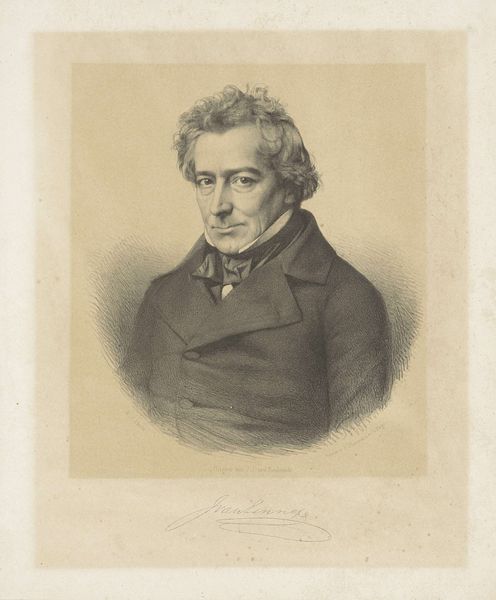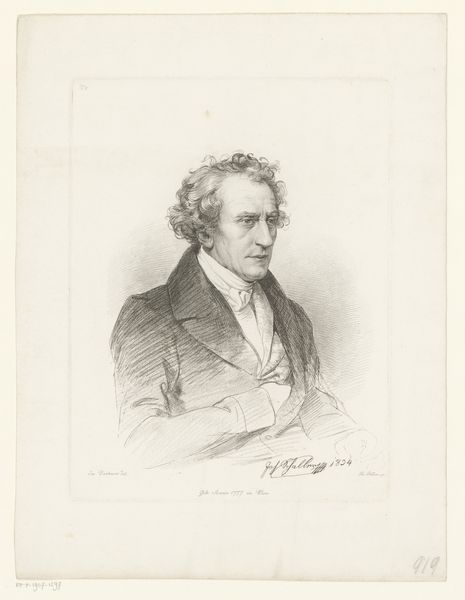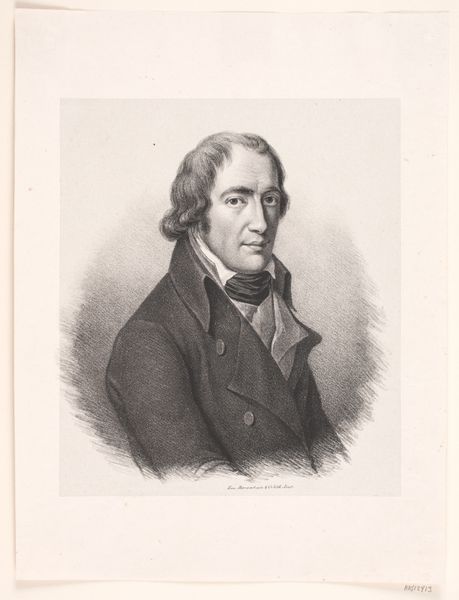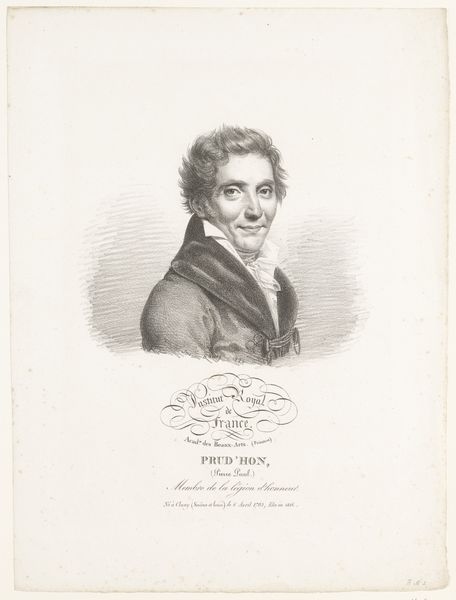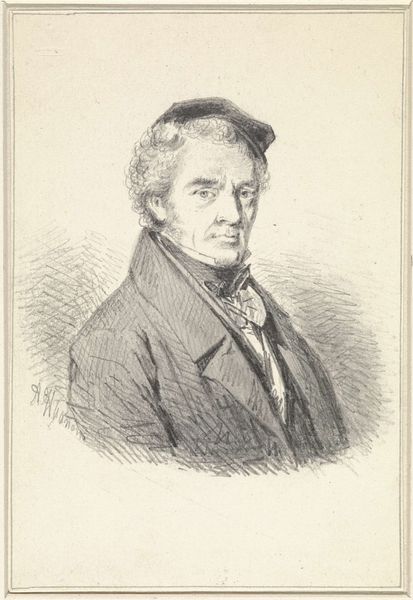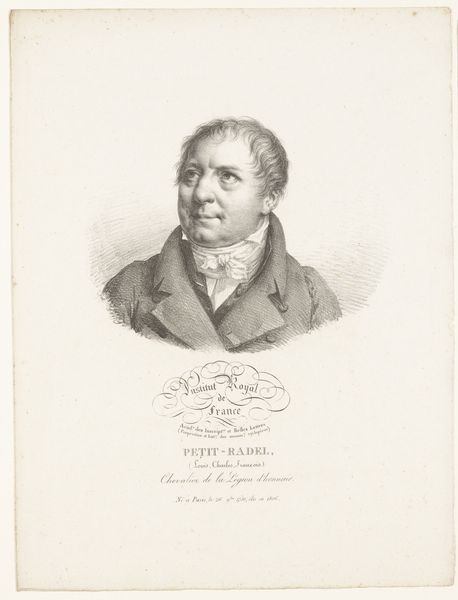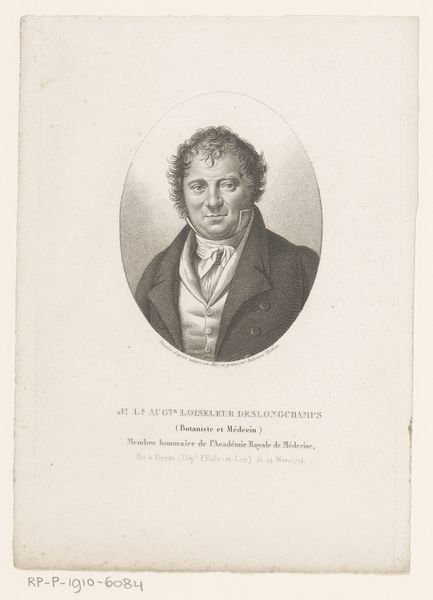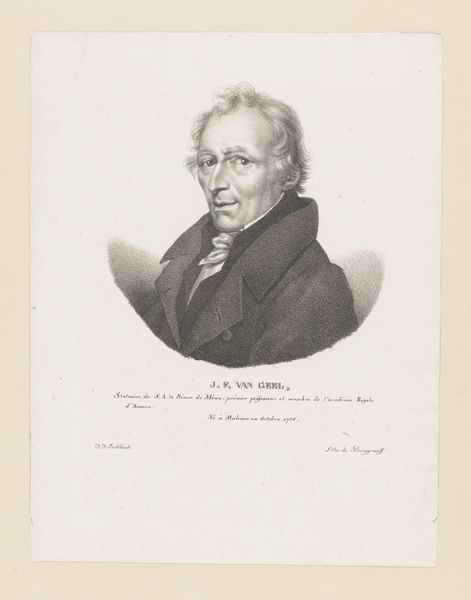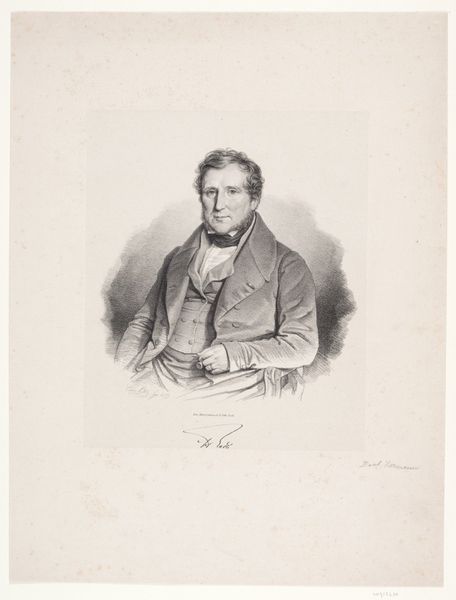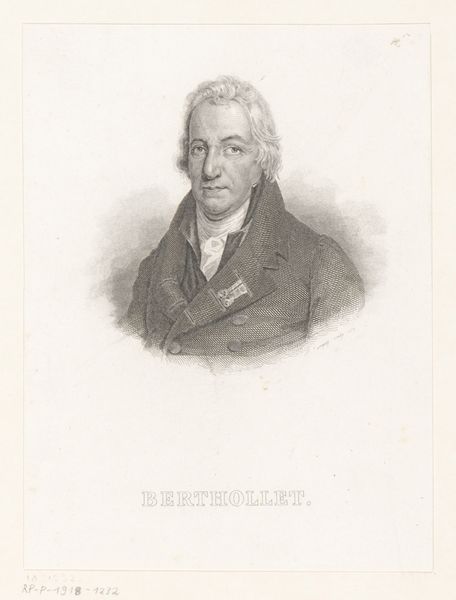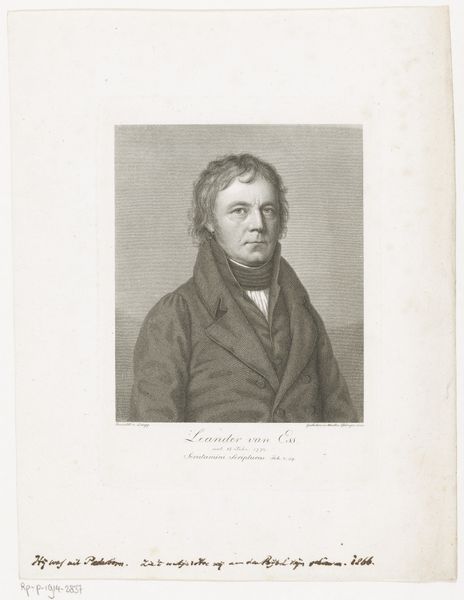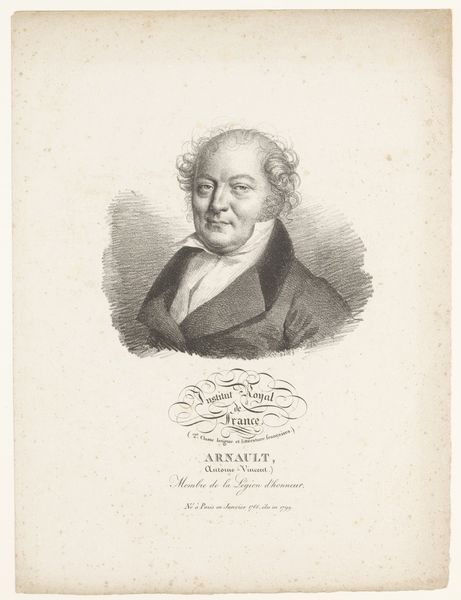
print, etching
#
portrait
#
neoclacissism
# print
#
etching
#
line
#
history-painting
#
academic-art
Dimensions: height 359 mm, width 273 mm
Copyright: Rijks Museum: Open Domain
Editor: This is Julien-Léopold Boilly’s "Portret van de botanicus Louis-Augustin Bosc d'Antic" from 1821, done in etching. There's such precision in the lines; it feels very…official, almost like a document. What strikes you about this piece? Curator: It's fascinating how this portrait encapsulates the changing role of science and scientists in post-Revolutionary France. Etchings like this were often commissioned by institutions, functioning as both commemoration and public affirmation. Editor: So, it’s less about personal expression and more about institutional representation? Curator: Precisely. Consider the inscription, highlighting Bosc's affiliation with the Institut Royal de France. This places him firmly within a network of power and intellectual authority, signaling the value the state placed on scientific knowledge. Does it give a sense of impartiality and power? Editor: Definitely. It makes me think about how scientific discovery itself became something of a national project. Curator: Exactly. Think about the influence of figures like Napoleon, who actively promoted science as a tool of national progress and societal control. Prints such as these were tools of image-making for an educated and influential social class. The democratization of images through the print medium allowed greater distribution of approved messaging, a step in maintaining political and intellectual control in post-revolution France. Editor: That's really interesting. I hadn’t considered how deeply intertwined art and institutional power could be in shaping the perception of scientific figures. Curator: It highlights how even a seemingly straightforward portrait can be a potent symbol of social and political values, shaping who is remembered, and how. Editor: I never thought about prints this way. It adds so much more depth to seeing it not just as an image, but also as an object embedded in its specific time. Curator: Understanding the socio-political context truly enriches the experience.
Comments
No comments
Be the first to comment and join the conversation on the ultimate creative platform.

